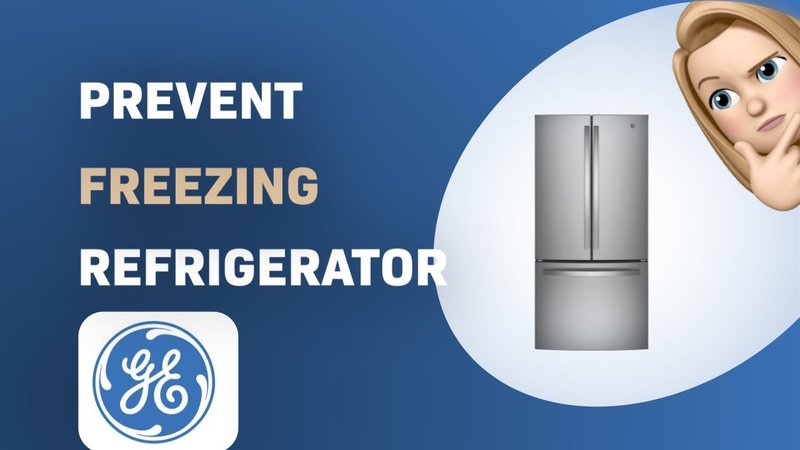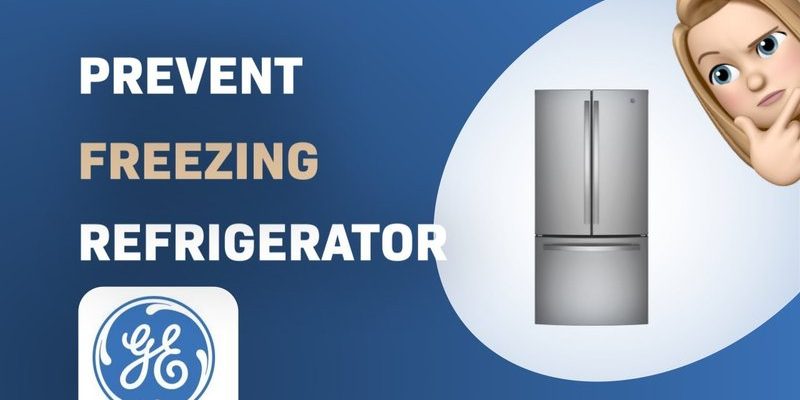
Let me explain a bit more. GE refrigerators come with warranties that cover parts and repairs for a set time, provided you follow their rules. Skipping those “rules” or trying to be a DIY hero on certain repairs can turn that warranty from a shield into a paperweight. So, how do you keep that warranty intact without losing your cool? It’s about knowing what’s okay to do, what’s not, and when to call in the pros.
Understand Your GE Refrigerator Warranty Terms Clearly
When you first unwrap your new GE fridge, the warranty booklet or card might seem like a snooze fest. Honestly, who reads those pages? But here’s a tip: spending a few minutes understanding your warranty terms can save you a lot of headaches later. GE usually offers a standard warranty that covers parts and labor for at least one year, with extended coverage on specific components like the compressor.
Your warranty will spell out what kind of repairs are covered, what actions can void it, and how to file a claim if needed. For instance, if you try to repair electrical components or replace parts without GE’s approval, that might void your warranty. It’s like buying a new car and ignoring the recommended service schedule—the manufacturer might refuse to fix it for free if you don’t follow the rules.
Make sure to keep your purchase receipt and warranty documents safe, either digitally or in a physical folder. GE may ask for proof you’re the original owner during a warranty claim, so having that handy will speed things up.
Why DIY Repairs Can Be Risky for Your Warranty
Okay, so maybe you’ve watched a few YouTube videos on fixing fridge problems like temperature fluctuations or noisy compressors. It’s tempting to roll up your sleeves and dive in. But here’s the catch: GE’s warranty might specifically state that unauthorized repairs or using non-GE parts can void your coverage.
Imagine your fridge as a finely tuned orchestra. If one instrument (part) is swapped out with a cheap knockoff, the whole symphony can sound off. Worse, GE’s technicians may refuse to service a unit that shows signs of unauthorized tinkering. That means you’ll be stuck paying out of pocket even if the fridge has a legitimate manufacturing fault.
Sometimes, the issue may seem minor—like replacing a broken door gasket or resetting the control board—but if the steps aren’t done exactly as GE recommends, it could void the warranty. So, if you’re not 100% sure what you’re doing, it’s better to contact GE’s customer service or a certified technician.
Use Only Approved GE Replacement Parts and Accessories
One sneaky way warranty claims get denied is by using non-GE replacement parts. If you’re tempted to save money with generic or universal parts—like a remote control panel or an ice maker component—hold your horses. GE designs their parts to work seamlessly with their refrigerators, and using anything else can cause compatibility issues or damage.
Think of it like using the wrong key for your front door: it might fit a bit, but it won’t turn smoothly and could break the lock. Similarly, non-approved parts might not “sync” properly with your fridge’s control systems, causing problems down the line.
If you need to replace a part, you can often find genuine GE parts through official dealers or their website. Double-check the part number and ask if the part is covered under your warranty. Also, keep those receipts and installation records because proof of using approved parts helps keep your warranty safe.
Be Careful With Installation and Setup
Did you know that improper installation is a common reason for voided warranties? When a GE refrigerator isn’t installed according to the manufacturer’s instructions, it can strain components or affect performance, leading to issues.
For example, placing the fridge in a spot that’s too close to the wall can block ventilation. Your fridge needs some breathing room to work efficiently—otherwise, the compressor can overheat and fail early. If you installed it yourself without following the manual or skipped professional help, you might be responsible for repairs caused by that setup.
GE typically recommends that you have your fridge installed by a certified technician or dealer. This ensures correct leveling, electrical hookup, and proper venting. Paying a bit upfront for professional installation can save you big bucks later—and keeps your warranty intact.
Keep Up With Regular Maintenance and Cleaning
You might wonder how maintenance relates to your warranty. Here’s the deal: a lot of warranties assume you’ll take basic care of your appliance. Neglecting simple tasks—like cleaning condenser coils, replacing water filters, or defrosting the freezer—can cause damage that isn’t covered under warranty.
For example, dirty coils make your fridge work harder, which can cause parts to wear out prematurely. If a technician finds your coils full of dust or lint during a warranty inspection, they might argue that poor maintenance caused the problem. It’s like ignoring your car’s oil changes and then complaining about engine trouble.
GE provides maintenance tips in your user manual—try to follow these consistently. Set reminders to clean coils every six months and swap out water filters as recommended. These small actions keep your fridge running smoothly and protect your warranty status.
Don’t Attempt Unauthorized Modifications or Upgrades
Let me put it this way: your GE fridge is built to specific standards. Trying to supercharge it with third-party gadgets, modify the digital controls, or hack the internal software isn’t just risky; it’s a fast track to losing warranty coverage.
Some folks want to install smart-home controls, add extra shelves, or mess with ice maker timing settings. While customization sounds cool, unauthorized changes can interfere with the fridge’s normal operation and cause malfunctions.
If you’re curious about upgrades, check with GE support first. They might offer approved accessories or software updates that won’t void your warranty. Otherwise, putting your fridge on a “DIY experimental project” can end up costing more than you save.
When to Contact GE Support or a Certified Technician
You might be thinking, “Isn’t it easier to just fix it myself?” Sure, but here’s the thing: GE refrigerators have complex parts like electronic control boards, sensors, and compressors that require specialized tools and knowledge.
If your fridge stops cooling, shows error codes on the display, or has persistent issues, it’s best to reach out to GE’s official support or an authorized repair service. Not only do they know how to troubleshoot your exact model, but repairs done by certified techs keep your warranty intact.
Also, GE’s customer service can guide you through simple resets or troubleshooting steps without risking your coverage. Sometimes, a quick “reset” of the control panel fixes annoying glitches. But if that doesn’t work, calling in the pros is the smartest move.
Pro tip: Always document your communication with GE support and the repairs done. This paperwork is vital if you need to make a warranty claim later.
Wrapping It Up: Protect Your GE Refrigerator’s Warranty Like a Pro
In the end, keeping your GE refrigerator’s warranty valid comes down to respect—respect for the appliance, the instructions, and the folks who made it. Avoid unauthorized repairs, stick with approved parts, follow installation guidelines, and keep up with routine maintenance. Think of your warranty as a partnership: you do your part by caring for your fridge, and GE has your back if something goes wrong.
Honestly, it’s better to spend a little extra upfront on professional help or genuine parts than to gamble your warranty on a quick fix. So next time your fridge sputters or the display flashes a code, remember: patience and the right approach will keep your kitchen—and your warranty—running smoothly.
